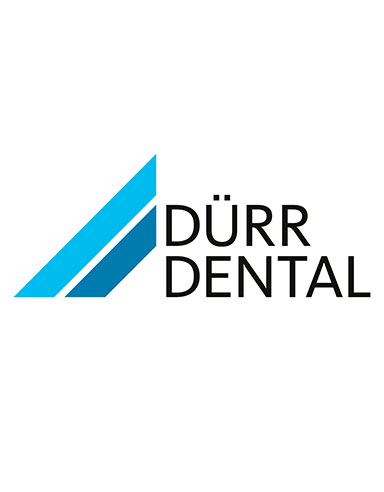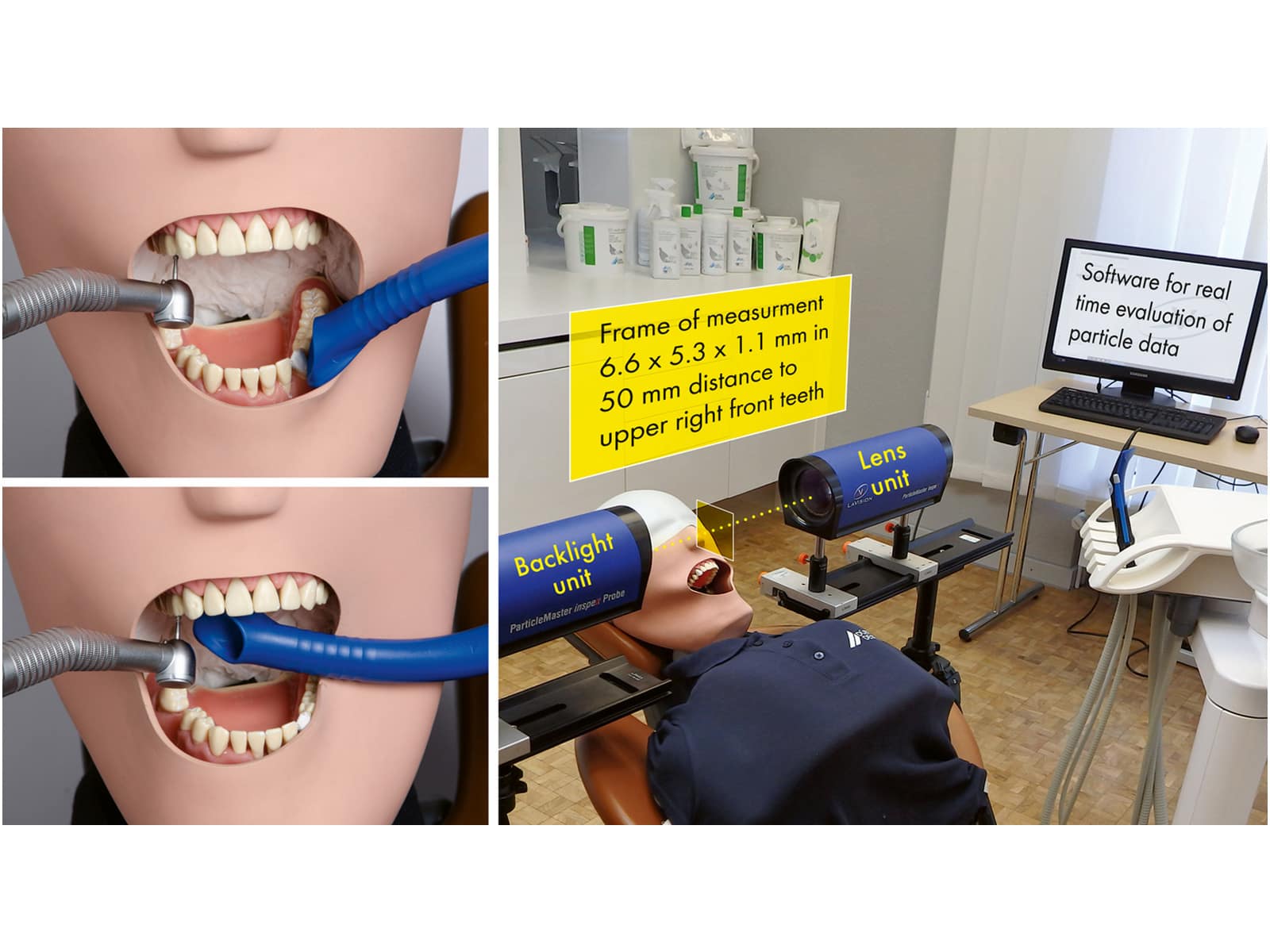Already before the SARS-CoV-2 pandemic, droplet mixtures and aerosols were already known as potential risk factors for infections in dental practices. As a result of the pandemic, increased attention has been paid to the topic of aerosols as a source of danger in dental practices. A new study from microbiologist Dr. Martin Koch and Priv.-Doz. Dr. Christian Graetz from the Clinic for Conservative Dentistry and Periodontology of the University Medical Centre Schleswig-Holstein/Kiel offers surprising new findings on the topic of avoidance of aerosols in dental practices.
The goal of the study, which was designed as an in vitro experiment, was to investigate the influence of the flow rate on the effectiveness of suction generated by means of a turbine. In vitro means that the experiment was performed in a controlled, artificial environment. As part of the experiment, the different particle sizes that combine to make up the spray mist were to be made visible and measurable. Spray mist is produced during almost all dental treatments, e.g. as a result of the use of high-speed rotating instruments, and is made up of cooling water, particles, powder, saliva, blood and microorganisms, among others. As a result, potential pathogens can be transported easily.
In order to make the particles visible in the study set-up, together with Göttingen-based company Lavision a new measuring method was applied, which was used for the first time to visualise dental spray mist. With the aid of this so-called "Image Shadowing", smallest particles from a diameter of 5 µm are made visible and therefore measurable. Recording of the high-resolution measurement images is achieved with the aid of pulsed LED background lighting. Special software uses pre-defined criteria to assist with automatic particle detection in a series of shadow images and determines the quantity, size and speed of the particles in real time.
The measurement was performed on a phantom head in a practice environment. Stands were used to hold the different suction cannulas and the turbine in place at the same time.
Various variables were altered during the experiment. For example, the performance of the suction system was increased, starting from a flow rate below 120 l/min and rising to above 300 l/min. In addition, the positioning of the suction cannula was also varied. A further variable was the design of the suction cannula.
The results were clear: at a suction power with a flow rate of at least 300 l/min almost all particles were extracted – regardless of their size. The shape of the cannula and its positioning were irrelevant here, and a suction rate of at least 300 l/min removes even larger particles. Dr. Martin Koch: "We have been able to show that almost all particles are extracted with a suction rate of 300 l/min – we actually achieved a suction of over 99%. This is significantly higher than the levels previously described in the literature."
But other findings of the study are also surprising. "One thing that stood out in particular was how badly saliva ejectors fared. We were surprised how few particles are actually removed by a saliva ejector. The low diameter of the suction device reduces the flow rate down to 70 l/min. As a result, the number of particles that leave the mouth of the patient increases dramatically. For this reason, a saliva ejector is never enough to protect dental staff against the generation of spray mist. Blocked suction pipes and small hose diameters have the same effect."
The results of the newly published study may well bring some movement into routine dental suction, as the data highlights ways in which infection protection in dental practices can be improved in a targeted manner for the protection of all, including the practice staff.
The entire study is available to read in the science journal PLOS One: https://journals.plos.org/plosone/article?id=10.1371/journal.pone.0257137

